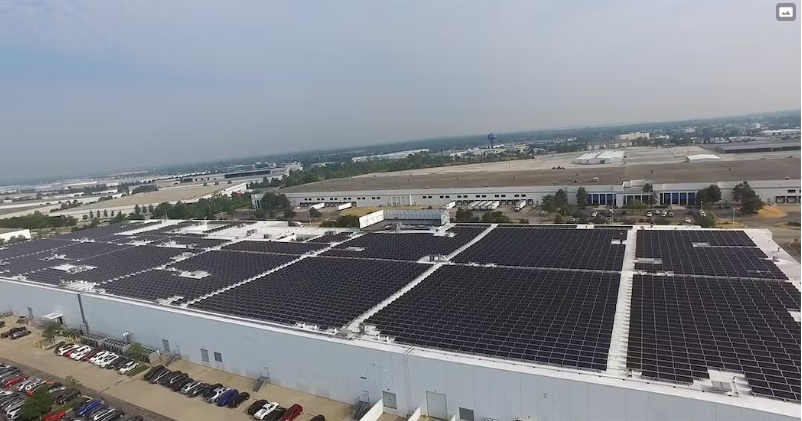
G&W Electric, a 99-year-old international provider of electrical components, has commissioned one of the largest microgrids in Illinois to address outages that have cost the company millions of dollars.
Before G&W Electric started looking into a microgrid, the Chicago-based company experienced outages about once a quarter for at least an hour in one of its two Chicago buildings. In this facility, workers produce molds for equipment, said Kate Cummings, manager of power grid automation.
Outage during 2018 snowstorm prompted microgrid idea
There’s only one utility feeder servicing the mold production building, and, in 2018, a four-hour utility outage during a snowstorm prompted G&W Electric to investigate ways to create resilience.
“With the molding facility, if we are down for an hour, we lose an hour of production and material,” said Cummings.
The only option for achieving resilience – other than a microgrid – was to use an existing diesel generator as backup for the mold production building. To avoid losing so much money during outages, the company chose the microgrid. It was commissioned in 2022, but the control system is only about 85% complete, she said.
Microgrid includes solar, flow battery, generator and flywheel
The microgrid includes 2.4 MW of direct current solar and 2 MW of alternating current solar as well as a modular flow battery that provides 6 MWh to 8 MWh of battery storage – 2 MW for four hours or 3 MW for two hours. A 2-MW diesel generator and a flywheel are also included, Cummings said. The flywheel serves as short-term energy storage, supplying 1.3 MW for about 58 seconds as a “ride-through” when the buildings are islanded from the grid.
The flywheel can quickly detect an outage at the utility, ComEd, and step in to provide backup power within seconds while the battery or diesel generator kicks in.
The solar panels are bifacial, which means they generate electricity from both sides of the panels. The array includes 6,000 panels that cover much of the roof area. The panels optimize the use of both sunlight and reflection, generating 18% to 20% more energy than traditional panels, the company said.
During outages, G&W Electric isolates the solar and storage because the surrounding area has too much solar and storage going into the feeder and can’t handle any additional current, Cummings said.
Deciding which resources to choose – and in what order – during outages
Before the microgrid was installed, the diesel generator was the backup during outages. Now, under certain scenarios, the microgrid will choose energy storage first, supplying energy from the battery to the main building and diesel power to the second building.
The company has different outage plans, depending on the length of the outage.
Frequency regulation yields income, defrays microgrid cost
For about two months the microgrid has been earning G&W Electric income by providing 22 hours a day of frequency regulation for PJM, said Cummings. Such regulation services help stabilize the grid.
“G&W Electric’s participation in the regulation market provides a significant income stream to help justify the cost of our microgrid,” she said.
More and more microgrid owners and operators, depending on where they are located and the available markets, are enrolling in grid services programs to earn income and defray the initial costs of the microgrids.
Researchers study ways to allow for grid services
To help this trend along, Idaho National Laboratory (INL) has developed a “microgrid in a box” that includes batteries with smart inverters to provide resilience along with fast-response grid services when needed.
With the microgrid in a box, INL wants to provide ancillary services to the grid in addition to the blackstart and frequency regulation capabilities demonstrated by a project at Fall River Electric Cooperative in Teton County, Ohio. That will allow utilities to handle more of the two-way flows and variable generation associated with distributed solar and electric vehicles.
And Florida International University researchers developed a microgrid that’s oversized to provide grid services, such as peak shaving, to the local utility, Florida Power & Light.
Will G&W Electric start offering microgrids?
In Chicago, not only does G&W Electric use a microgrid, but it will offer them to customers, the company said in a blog post.
“Ultimately, G&W Electric will offer a customized turnkey microgrid solution to all clients that want to produce their own reliable source of power,” the blog said.
When asked about offering the technology, Cummings said, “At this time, G&W Electric is focused on leveraging the benefits of microgrid investments and its impact on uptime and cost savings,” she said. “We are happy to share the lessons learned and any insights.”